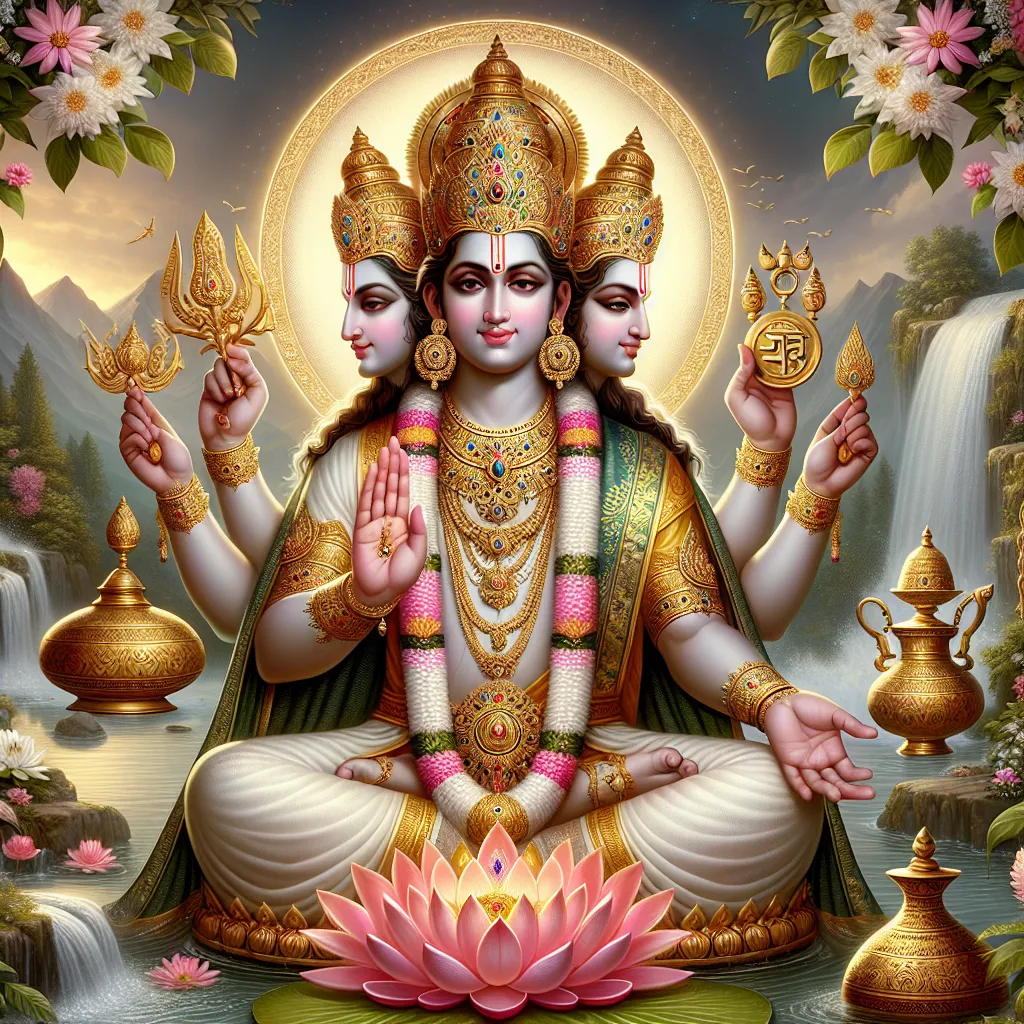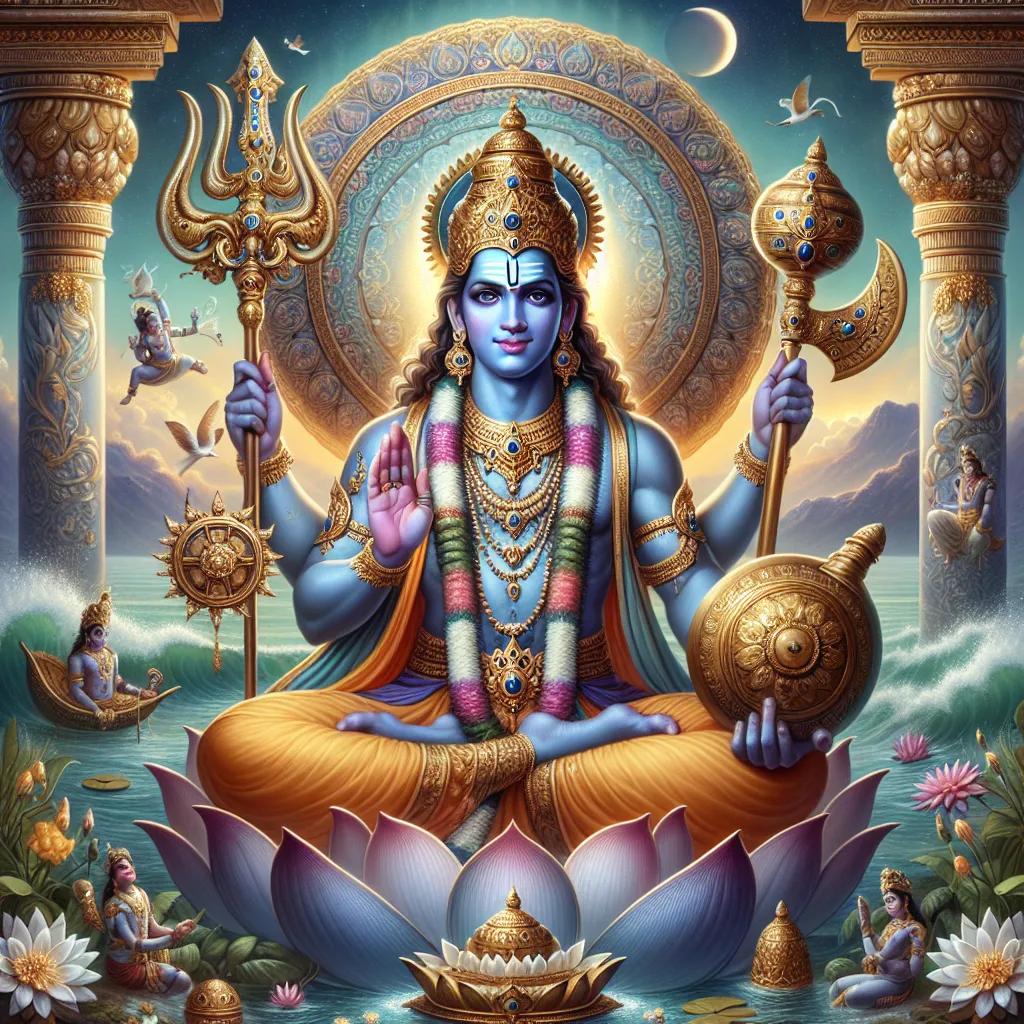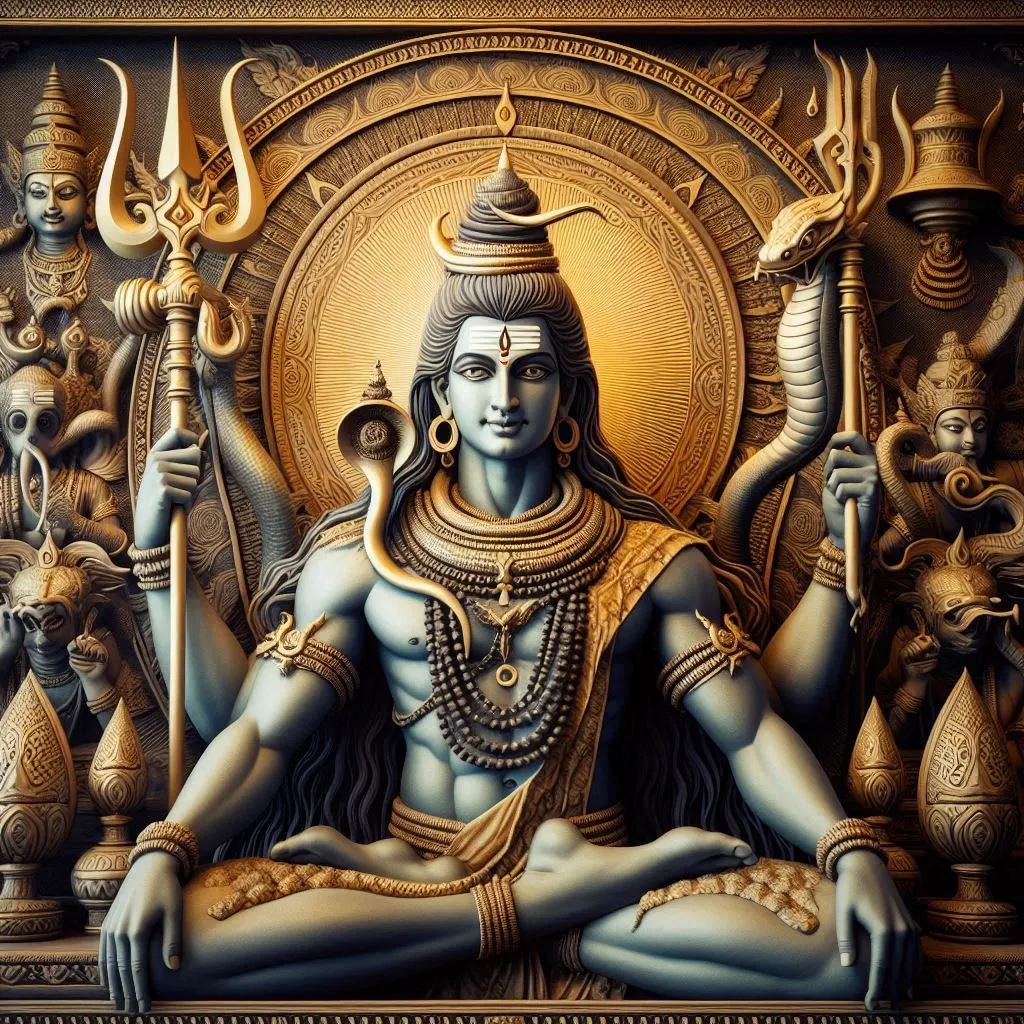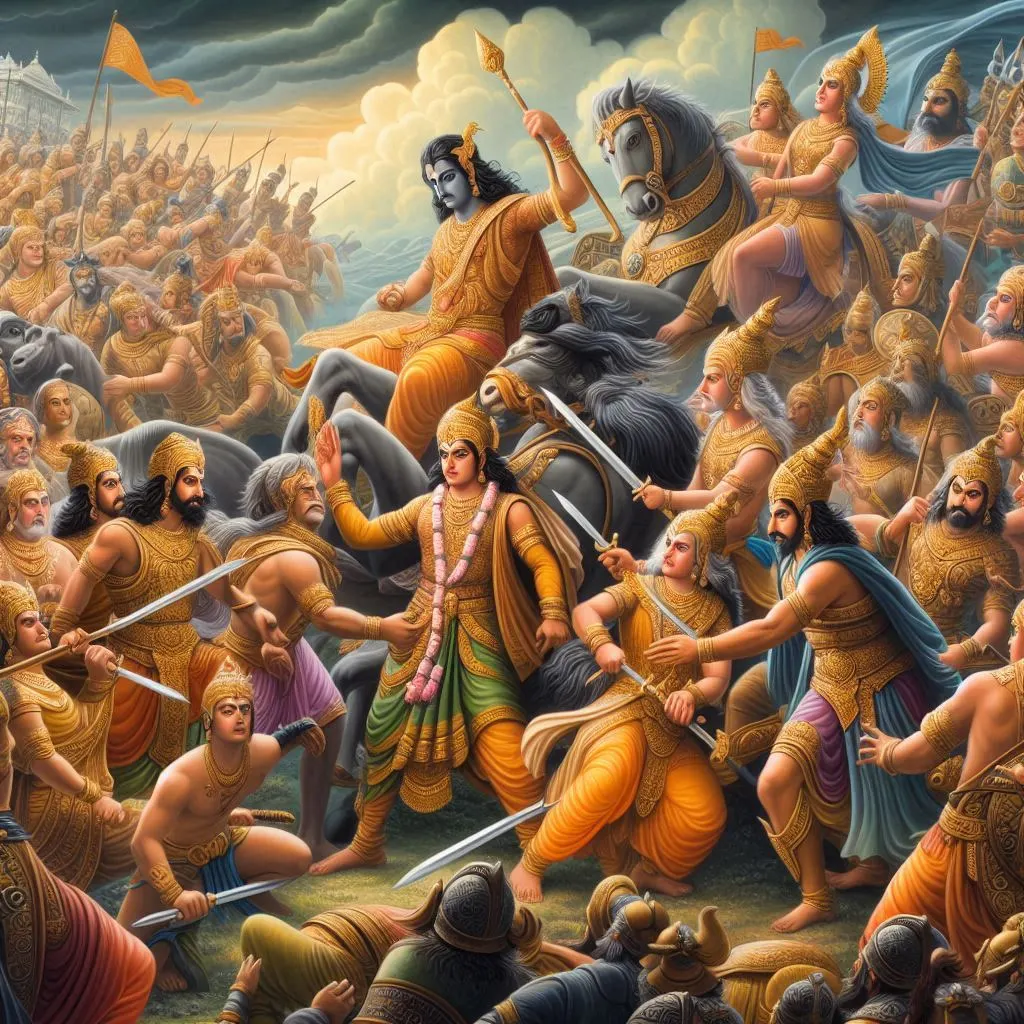Indian Mythology: Gods, Heroes, and Epic Tales
Indian Mythology: Gods, Heroes, and Epic Tales
Indian mythology is a rich and diverse collection of stories, traditions, and legends that have been passed down through generations in India. It includes a vast array of gods, goddesses, heroes, and mythical creatures, each with their own unique stories and significance. Indian mythology primarily draws from Hinduism but also includes influences from Buddhism, Jainism, and other regional traditions.
Major Deities in Indian Mythology
Brahma:
- Role: The creator god, part of the Hindu trinity (Trimurti) alongside Vishnu and Shiva.
- Symbols: Four heads, Vedas, lotus.
- Visual:

- Myths: Brahma is credited with the creation of the universe and all living beings. Despite his importance, he is less commonly worshiped compared to Vishnu and Shiva.
Vishnu:
- Role: The preserver and protector of the universe, part of the Hindu trinity.
- Symbols: Conch, discus, lotus, mace.
- Visual:

- Myths: Vishnu is known for his ten avatars (incarnations), including Rama and Krishna, who descend to earth to restore cosmic order. The stories of Rama in the Ramayana and Krishna in the Mahabharata are among the most celebrated in Indian mythology.
Shiva:
- Role: The destroyer and transformer, part of the Hindu trinity.
- Symbols: Trident, snake, damaru (drum), third eye.
- Visual:

- Myths: Shiva’s stories highlight his role as both a destroyer and a benefactor. He is depicted as a meditative ascetic and a fierce deity, with tales such as the churning of the ocean (Samudra Manthan) and the destruction of the demon Tripurasura.
Durga:
- Role: The warrior goddess, embodiment of Shakti (divine feminine power).
- Symbols: Lion or tiger, weapons in multiple arms.
- Visual:

- Myths: Durga is celebrated for her victory over the buffalo demon Mahishasura, symbolizing the triumph of good over evil. Her festival, Durga Puja, is one of the most significant Hindu celebrations.
Epics and Texts
The Ramayana:
- Description: An ancient epic that narrates the life of Prince Rama, his wife Sita, and his loyal companion Hanuman. It focuses on Rama’s quest to rescue Sita from the demon king Ravana.
- Visual:

- Significance: The Ramayana is revered for its moral and spiritual teachings, emphasizing duty (dharma), devotion, and righteousness.
The Mahabharata:
- Description: One of the longest epic poems in the world, it details the struggle between two branches of the Kuru dynasty—the Pandavas and the Kauravas. It includes the Bhagavad Gita, a sacred dialogue between Prince Arjuna and Krishna.
- Visual:

- Significance: The Mahabharata explores complex themes of duty, justice, and the human condition, offering profound philosophical insights.
Conclusion
Indian mythology offers a profound and intricate tapestry of stories that reflect the cultural and spiritual heritage of India. These myths continue to inspire art, literature, and religious practices, resonating with people across the world.

Further Reading
For more in-depth exploration of Indian mythology, consider these resources: